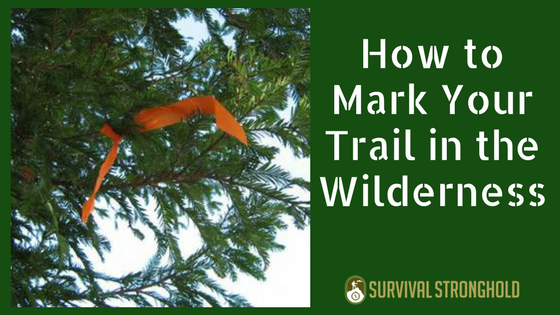If you ever find yourself stranded in the wilderness for whatever reason, you will most likely be faced at some point with a decision between staying put and moving on. While it is always advisable to stay in the place you became stranded, so to speak, such as the last place you saw your companions before getting lost, a crash site, your broken down car, your campsite, etc. This will be the most likely place a potential rescuer will find you.
However, for the sake of staying alive or avoiding any number of threats to your safety, you might need to move. You might run out of food or water and need to take off in search of more before you perish. You might have reason to believe there are people who can help you elsewhere. Or perhaps you got stranded by losing your way while hiking or backpacking, and are already on the move to begin with.
If you do decide, for whatever reason, you need to move, it is very prudent to mark your path along the way. This way, if someone comes across your campsite, crash site, car, or any other sign that you have been stranded, or people go to look for you the last place you were seen, there will be a significant indicator that you have moved on, and in which direction. Many people have been rescued this way, so this is very important.
First of all, when you are packing a bug-out bag, a backpack, or preparing for any kind of adventure in which getting lost might be a possibility (God forbid), bear this in mind. A notepad and a pencil are very prudent to carry with you at all times, and work as great trail markers. If you can write notes to leave along the way as you go, you greatly increase the odds that someone might be able to find and follow after you. If the paper gets wet, the pencil writing can still be read, and you’ll be able to provide detail as to where you’ve gone and what condition you are in.
If you don’t have a pencil and paper, try to think of the most obvious signs you can. Don’t expect your would-be rescuers to understand cryptic symbols made out of rocks or sticks, although the classic arrow or “HELP” sign shaped out of rocks or sticks is a great idea in many cases, it can also get walked over by animals or washed away in the rain. Try to use objects that are clearly human. Scraps of fabric tied to trees,
Scraps of fabric tied to trees, particularly brightly colored, reflective fabric, can be very helpful. Even if you are unable to clearly indicate what direction you’ve gone in, just giving a sign that a human has been around recently will give hope to a search party.
Little things like this can make such a difference in a situation where you need to be rescued. Keep this in mind in case you ever find yourself needing to be rescued one day.
If you enjoyed this, you might also like….


